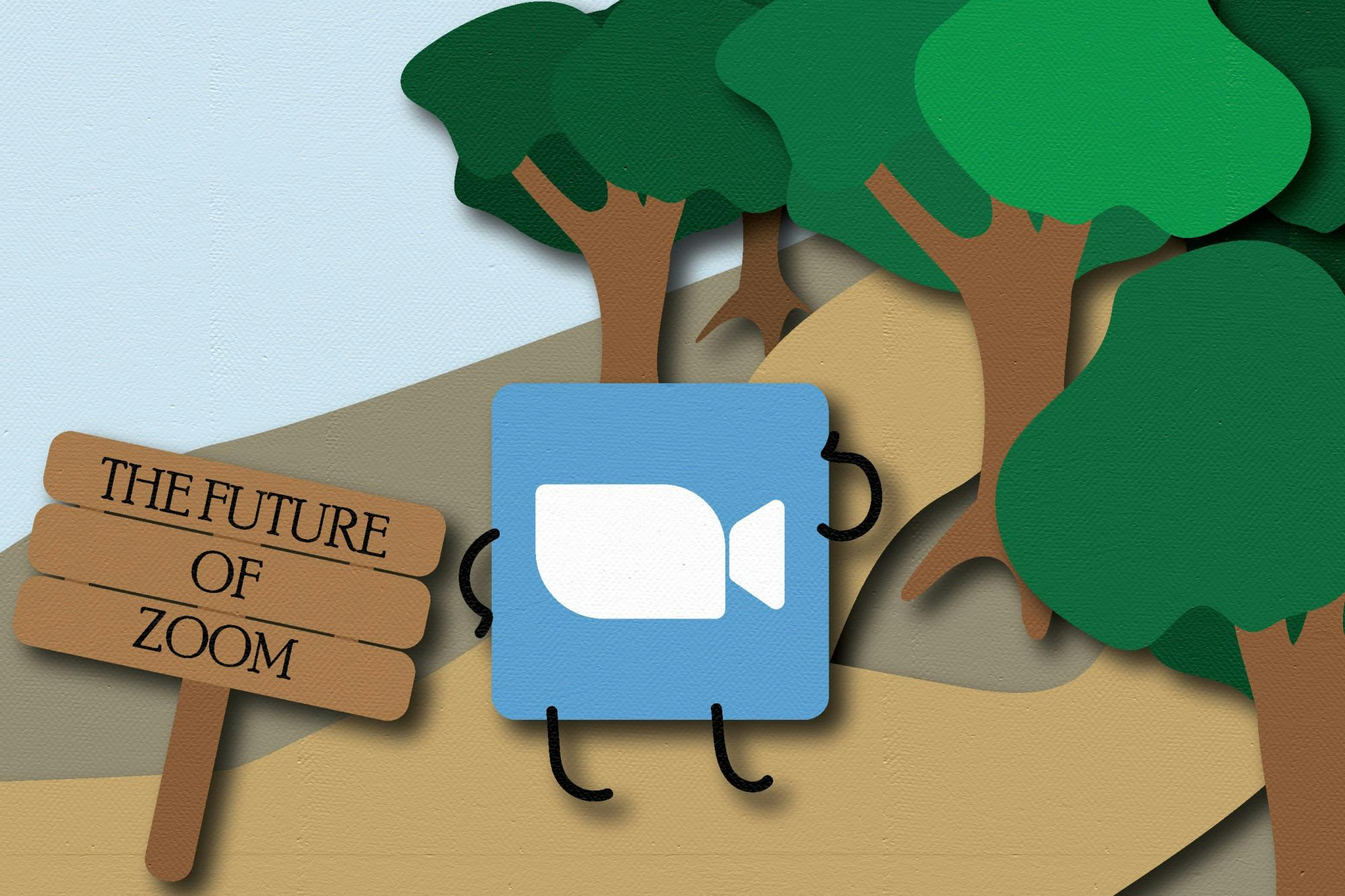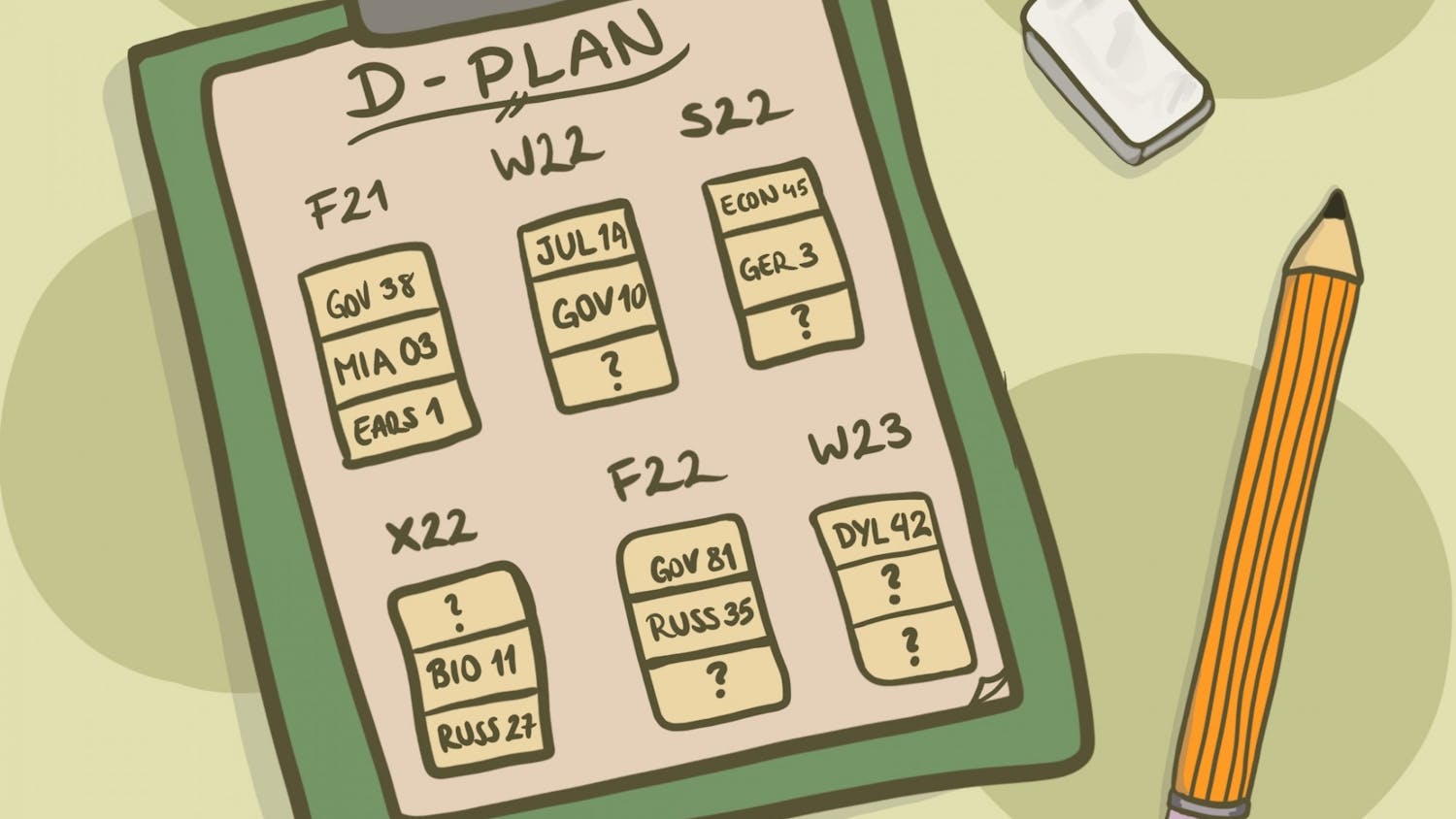This article is featured in the 2021 Spring special issue.
Since the pandemic descended on Dartmouth, online platforms like Zoom, Panopto Video, Slack and GroupMe have dominated day-to-day interactions. While these programs rose in popularity to fill a void created by the shift to virtual classes, they might not disappear completely as Dartmouth moves away from online learning and back into the classroom.
Some professors found that certain aspects of these virtual programs enhanced their teaching capabilities. When writing professor Min Young Godley taught WRIT 5, “Metamorphosis and Otherness” to freshmen during the winter term, she said that she used Slack and Zoom most often and found both helpful. Slack’s organizational system, she said, was particularly useful because she could post Zoom links and class activities in channels dedicated to the day of the assignment.
“I had these channels dedicated to the times Mondays, Wednesdays and Fridays, so whether I do synchronous meetings or activities on Slack, it was all on Slack” Godley said. “I think that was easier for students to keep up to the structure because they could just go there and during class time they would know what to do for that week in addition to the syllabus.”
Cardiology professor John Butterly, a 40-year veteran in the teaching world, taught four classes this academic year using Zoom and Panopto Video: GEOG 20.01, “Global Health & Society,” “Cardiovascular Physiology Year 1,” “Problem Based Learning Year 1” and “Problem Based Learning (PBL) Year 2.” He said he felt that Zoom generally served its purpose by allowing him to speak to the class and share slideshows, adding that the platform’s screen-sharing function was especially beneficial for displaying medical tools necessary for his class.
“Zoom is very, very good for teaching a course on ECG [electrocardiogram] interpretation because I can show the ECGs to all the students I’m teaching,” Butterly said. “I can give them feedback, they can give me feedback, they can show me how they read them, so it was particularly useful for that.”
Yet both professors said there were clearly limitations to using technology to simulate a classroom environment. Godley felt that it was difficult to reach students who she believed would have benefited from her personal help in a one-on-one, in-person meeting. Before the pandemic, students could come up to Godley after class to schedule appointments, but during remote learning, students often arrive at Zoom meetings promptly and immediately leave when class is over — rarely sticking around to ask questions or schedule appointments with their professor.
Godley said that the biggest challenge to online learning was helping students out and encouraging them to accept help when they need it.
“I think students, especially the freshmen, struggle with this idea that instructors are judges rather than helpers,” Godley said. “To address that and convince them that that’s not the case, me being visible is really important.”
Butterly echoed the sentiment that Zoom cannot capture all elements of the classroom. He emphasized that although Zoom effectively communicates information, students and faculty miss all of the personal interaction, which he feels is “very important.”
“It’s not just about what I’m saying and what you’re saying,” Butterly said. “It’s about how we’re saying it and how we feel about it. You use body language when you’re talking to people so you can draw more out of them or tell they’re not quite getting it. That’s much harder to do on Zoom.”
For Butterly, the conveniences and perks of virtual teaching did not outweigh the weaknesses.
He does not intend to continue using Zoom in future classes unless it is necessary for public health.
“We didn’t have a choice,” Butterly said. “If given a choice, I would teach in person.”
Godley, however, does not think she will cut all aspects of online learning cold turkey. She believes that as the College transitions to in-person learning, students will likely have different expectations after the experience of remote learning with faculty. As much as she is excited to go back, Godley recognizes that it may not be possible to completely return to pre-pandemic normalcy within the classroom.
“I am excited to go back on campus, but there is an assumption that we’re going back to normal,” Godley said. “We’re not really going back to anything because we are entering into a new situation and probably have to deal with the residues of this experience — quarantine, remote learning, the trauma, if you will.”
With this in mind, Godley plans to continue offering some Zoom meetings, even at “odd hours,” once the pandemic ends in addition to her regular office hours appointments, recognizing that it may be difficult for students to be present on campus at a certain time. She also plans to continue using Slack for peer reviews because it provides easy access to other students’ papers and peer comments.
While most students are eager to return to the classroom, some hope that certain elements of online classes survive the transition. Emily Masuda ’24, who took GEOG 20.01, “Global Health & Society” with Butterly during the winter, said that it was “really helpful” to go back to the recorded videos on Panopto as she studied for tests. She hopes that during post-pandemic life, crucial lectures will still be recorded so students can refer back to them.
“I liked to search certain phrases in the transcript and rewatch sections of the lectures,” Masuda explained. “This feature was helpful because sometimes I didn’t catch everything that was said during class.”
Beyond the academic classroom, clubs and organizations were also forced to shift toward virtual platforms for meetings, communications and socializing. Mental Health Union vice president of outreach Dakota Ma ’22 appreciates how technology has allowed her to stay involved in MHU despite being physically very far away.
Ma said that MHU has seen a lot of new faces this year. While she is unsure if this spike in attendance is due to better marketing to freshmen or other factors, she said that accessibility has “definitely played a part” because of the ability to hop on and off meetings and not worry about commute time.
“We’ve heard from a couple of new members that they always wanted to attend an MHU meeting, but haven’t been able to because of various conflicts,” Ma said. “Now, since they can just log onto a Zoom link, it’s a lot easier for them, and so they’ve actually started coming regularly because of this.”
Moving forward to post-pandemic life, Ma is excited to build off this momentum and transition into in-person meetings.
“In terms of general meetings, when we are able to have them in-person, we’ll have them in-person just because a lot of what we do in MHU is very collaborative — we build off of each other — and Zoom is a little bit awkward for doing that,” Ma said.
While Zoom may have increased accessibility to meetings, Ma believes it raises additional concerns: difficulty building connections and the exhaustion that accompanies using Zoom.
“Since classes and other events are all on Zoom, there is a very real issue of Zoom fatigue,” Ma said. “These long hours in front of a screen can be very mentally, emotionally, and physically draining. I think there is a very delicate balance between how Zoom does improve accessibility, but it also brings a whole new challenge with having to spend more time in front of a screen and engage.”
Although MHU member meetings will return to an in-person format, Ma noted that the pandemic opened the door to remote possibilities in their peer support program. Instead of the original phone line service that was used pre-pandemic, the MHU has decided to keep the Zoom portion of it with an additional in-person component.
Other clubs noted that the experience of Zoom pales in comparison to the in-person events. Prior to the pandemic, Dartmouth Model United Nations would head to Montreal to participate as delegates at McGill University’s McMUN conference almost every year, and they would also host their own conference every spring. This year, many of these experiences shifted to Zoom and Slack. While secretary general of DartMUN 2021 Mila Escajadillo appreciated gaining the experience of attending a conference over Zoom, she missed the physical presence of her fellow delegates.
“It’s really hard to get into the role of playing a character when you’re still sitting in your bedroom,” Escajadillo said. “You lose the charm of in-person interaction.”
Escajadillo co-organized this year’s virtual DartMUN weekend-long conference with Alec Rossi ‘21 back in April, bringing together over 500 high schoolers from around the world to the College to take on the role of countries and debate global issues.
“It’s usually really fun,” Escajadillo explained. “All these high schoolers are here, walking around in suits, going into Rocky. Everyone is confused. It’s really fun.”
Escajadillo added she and Rossi waited until about November 2020 to see if an in-person or hybrid format would be possible before officially deciding on the Zoom and Slack format of the conference. As a ten-year participant of Model UN, Escajadillo wishes her final “victory lap” conference could have happened under different circumstances instead of on Zoom as she — along with all other members of the class of 2021 — approaches graduation.
“I dreamed of being secretary general and running my own conference forever,” Escajadillo said. “I was really bummed not being able to meet the staff in person, the freshmen in person and really make connections like that.”
In the future, Escajadillo does not foresee any elements of conferences shifting to Zoom permanently, but added that the group found Slack useful.
“We will likely continue to use Slack. We are hoping to return to an in-person conference format, but Slack was such a great communication platform that we will likely favor it over GroupMe going forward,” Escajadillo said.
While different clubs and professors will vary in how much they rely on these technologies in post-pandemic life, one thing is certain: Zoom and other digital apps won’t disappear from Dartmouth’s campus overnight.





